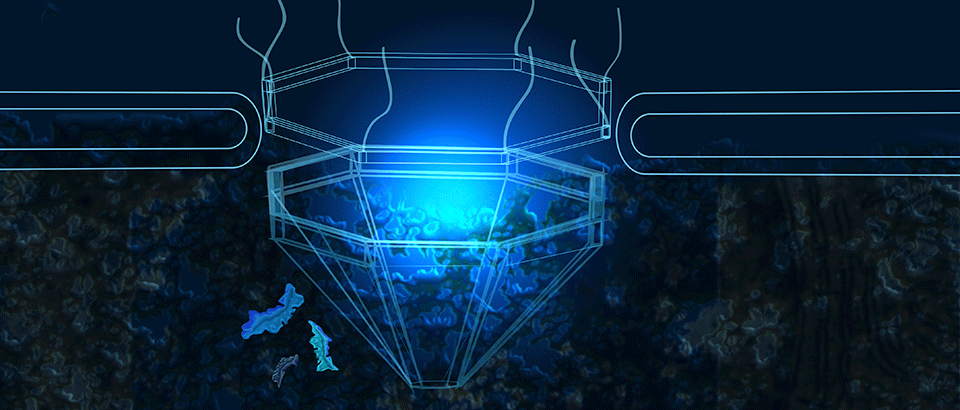By Hannah Krakauer
Seattle BioMed Communications Specialist
The three-dimensional architecture of a cell’s nucleus, which contains its genetic information, is critical to determining which of a cell’s genes are actually expressed. Using systems and cell biology techniques, researchers have identified how nuclear pore complexes—collections of proteins studding the nuclear membrane— serve as key elements in defining nuclear architecture and controlling which genes get expressed. This new insight into the behavior of nuclear pore complex proteins frequently targeted by infectious diseases is published in the Feb. 28 issue of the journal Cell, which is among the top-five most prestigious journals in the country.
Nuclear pore complexes (NPCs), assemblies of proteins embedded in the nuclear envelope, have long been known to regulate the transport of molecules in and out of the nucleus. They also interact with heterochromatin—the tightly bound proteins and DNA that inhabit the edge of the nucleus—though until recently, the nature of that interaction was unclear.
To better understand how NPCs control gene expression, investigators from John Aitchison’s laboratory, at Seattle BioMed and Institute for Systems Biology working with scientists from Richard Wozniak’s laboratory at University of Alberta looked closely at the highly conserved yeast NPC protein called Nup170p. The protein interacts with regions of the genome that code for ribosomal proteins, necessary for the translation of RNA to proteins. It also interacts with subtelomeres: regions of DNA that lie between the telomeric repeats and chromatin.
Gene expression is largely controlled by the three-dimensional structures of chromatin, which make it easier or more difficult for transcriptional proteins to access the DNA wrapped tightly in a complex of protective proteins. Those chromatin structures are even further controlled by the NPCs, which serve as the scaffold that organizes and positions them within the nucleus.
Because structures are so fundamental to a cell’s behavior, NPCs are a frequent target of infectious diseases like HIV, influenza, HPV, HCV, and dengue, and defects in the NPC structure are associated with neurodegenerative diseases, many cancers and heart disease.
“We need to understand how the genome is organized and how that spatial organization contributes to function,” says Aitchison. “We know infectious viral proteins exploit the NPCs as a mechanism of gaining control of the cell.”
Aitchison, Wozniak, and their colleagues used systems biology techniques to analyze the role of Nup170p, including genome-wide expression analysis and genome-wide analysis of chromatin structure, in order to show which regions of the genome Nup170p interacts with, and which regions are impacted by disruptions to those interactions. This “big data” approach allowed researchers to consider many different proteins and genes at the same time, giving a more thorough picture of what was taking place in the yeast cells.
[Editor’s Note: ISB and Seattle BioMed have a formal inter-institutional agreement that allows our scientists to share resources and core technologies. It also grows the reach of ISB’s signature cross-disciplinary and integrative collaboration, a necessary aspect of our systems approach. Here, Hannah Krakauer, Seattle BioMed’s Communications Specialist, reports on the Feb. 28 publication of a paper from the Aitchison Group (which has labs at both institutions) in the prestigious journal Cell. Read the paper.]



 isbscience.org/research/role-of-key-nuclear-pore-proteins-on-the-assembly-of-chromatin/
isbscience.org/research/role-of-key-nuclear-pore-proteins-on-the-assembly-of-chromatin/

